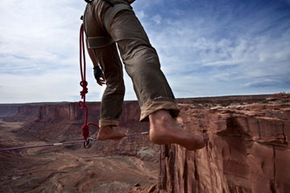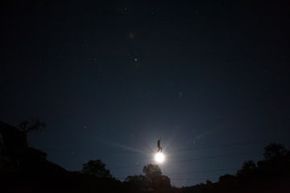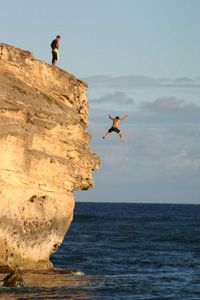In April 2012, American rock climber Dean Potter garnered international media attention for walking. OK, it was a really scary kind of walking called highlining, an extreme sport in which athletes traverse a narrow, springy band of rope suspended high above the ground.
Measuring less than 1 inch (2.54 centimeters) thick, Potter's line was strung across a 44-yard-wide (40-meter) section of the Enshi Grand Canyon in China's Hubei Province. The 40-year-old looked calm as he stepped out above the chasm, which Chinese state media reported was 1,968 yards (1,800 meters) deep [source: BBC]! While this measurement is likely exaggerated, any fall still would have killed Potter, who chose to walk without a harness or safety net. A couple of times it seemed that the swirling winds might throw Potter from his perch, but after two heart-stopping minutes he safely reached the opposite cliff.
Advertisement
Potter's feat might remind you of tightrope walking, but there are some important differences. Tightrope walkers usually carry a long pole to help maintain their balance and perform on a heavy steel cable pulled tight so that it doesn't move very much. Highliners, on the other hand, balance using their arms and walk on a type of rope known as tubular nylon webbing, which is hollow like a straw and much stretchier than steel cable. This flexibility causes the line to swing and bounce when walked upon, making highlining the more difficult of the two activities.
Even when you wear a safety harness tethered to the rope, highlining can still be quite dangerous. A fall near the starting point could send you swinging back into the rock, while a tumble midline could cause the rope to fail if it's not set up properly.
Advertisement




